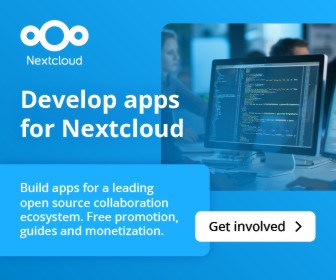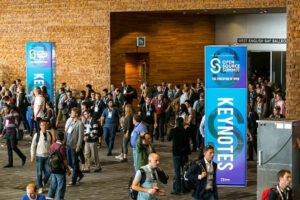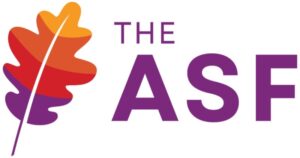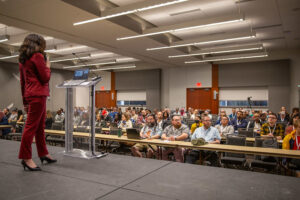According to Red Hat’s CEO, pandemic caused logistical changes such as remote working were already a part of the open source ecosystem, which has helped put FOSS further ahead of the curve moving forward.
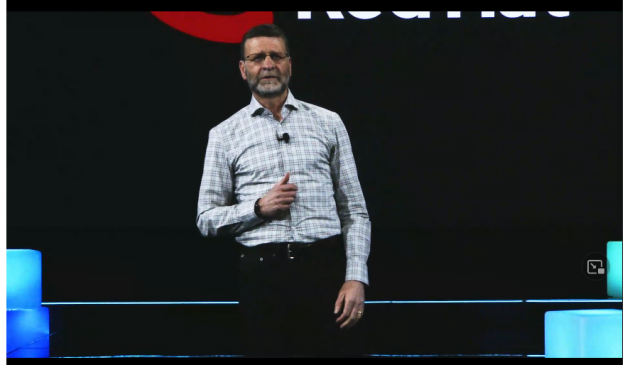
Tuesday in Boston the doors opened on the first in-person Red Hat Summit since 2019. The company’s 2020 and 2021 events had been held entirely online in deference to the Covid virus.
At the last in-person Red Hat lovefest, Red Hat was technically still a publicly traded independent company and Jim Whitehurst was the company’s CEO. The biggest news at that conference (other than the all-but-done sale to IBM) was the release of Red Hat Enterprise Linux 8, making it the last RHEL release under an independent Red Hat.
It seems somehow fitting that the company’s next in-person event has happened about a week before RHEL 8.x is to be replaced by RHEL 9.
The pandemic’s effect on the conference also means that while Whitehurst’s replacement, Paul Cormier, has been CEO at Red Hat since early 2020, yesterday was his first opportunity to stand before a live audience at Summit to give the opening keynote.
“Welcome to the Red Hat Summit,” he said to open the event. “I know we have a big virtual audience today, welcome to you. It’s amazing to see all of you actually in front of me here, in person. You don’t know how good it feels to see that and say, welcome to the Red Hat Summit.”
He began his first in-person Summit keynote as CEO by noting that much has changed since that last Summit before a live audience.
“These past two years we’ve been focused on what we’re going through right now, but I really do think we should look at it as what we’re accomplishing as we’re doing this,” he said. “Nearly every single industry, globally, went to 100% remote working overnight. Organizations, regardless of industry and size, had to learn to operate virtually and on demand. Companies needed to deliver goods and services to customers without a brick and mortar footprint. New tech hubs emerged in very unlikely places around the world. Newly remote workers realized they didn’t really have to be tied to a physical office to get their job done. Hiring new talent focused on skill and not location.
“These are not insignificant achievements, even when we aren’t faced with the worst global pandemic in a century,” he added. “And while this way of working was unfamiliar to those who were forced to adapt during the pandemic, to the open source world it was just another day. Every open source project is worked on remotely and has been from the beginning.”
This was the lead-in to what was essentially a 30 minute pep rally for Linux and open source, which is not uncommon for Red Hat, which has always been proud of its open source heritage. While the talk occasionally drifted into what might be construed as a sales talk for Red Hat and its products (there were a couple of short interviews with Red Hat customers), it mainly remained something of an evangelical witnessing on the value open source.
That fits with the way Red Hat has worked for as long as I’ve been watching it. The company sells the virtues of Linux and the open source development model first, and only then does it point to its products as best-of-breed examples of what open source makes possible. It’s always seemed to be important to the company that it acknowledge that it was built on the work of the open source community — and that it continues to benefit from work being done by people who may have no affiliation whatsoever with the company.
In Cormier’s talk, Red Hat didn’t even get first mention. That honor went to the Linux Foundation, which he pointed out hosts more than 2,300 projects, with more than 28,000 contributors from around the globe, who are adding more than 29 million lines of code each and every week.
“Most of these contributors, even in a world where there isn’t an ongoing pandemic, will never meet face to face, but will still drive the next generation of open technologies,” he said. “Whether we realize it or not, our accomplishments, and there are many, during the pandemic brought us closer to the open source model. In a way, this is why open source innovation is now driving much of the software world.”
What was most notable to me was that not once during his time on stage did Cormier say a single word about IBM, the company that now owns Red Hat lock, stock, and barrel. Probably this was on purpose, as both Red Hat and IBM have gone out of their way since before the sale closed, to stress the fact that even though Big Blue now owns the largest open source success story outside of Linux, Red Hat remains an independent company, even if the two do partner on some projects.
As Cormier put it to me shortly after he became CEO, IBM is the company’s controlling shareholder, nothing more and nothing less, and the unspoken message in his keynote was that the firewall between the operations of largely proprietary IBM and completely open source Red Hat remains intact.
Is that true? Obviously, I can’t say for sure, but from where I sit that seems to be the case — mostly.
That doesn’t mean that IBM has necessarily taken a completely hands off approach when it comes to Red Hat’s day-to-day operations. I still suspect (despite Red Hat’s denials) that IBM influenced its decision to end CentOS’s position as a downstream RHEL clone, for example, and there have been rumors during the last six months that IBM is pressuring the company to lower costs by reducing payroll expenses.
“As we approach what hopefully is the tail end of an incredibly difficult few years, it’s time for all of us to accelerate,” Cormier said. “It’s time to take the lessons that we learned and applied as we transform to digital first, and use them to make our businesses, our cultures, and our global communities even better. The term ‘new normal’ is now used like it’s predetermined and static. It isn’t; you get to define your new normal.”
Christine Hall has been a journalist since 1971. In 2001, she began writing a weekly consumer computer column and started covering Linux and FOSS in 2002 after making the switch to GNU/Linux. Follow her on Twitter: @BrideOfLinux

